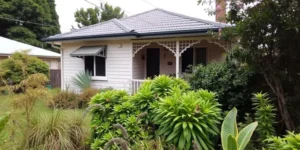Looking for a home can be hard. It takes almost five years to save for a house deposit in Australia. Rent and Buy Homes offers a way to move in now and buy later. Let’s explore how it works.
Key Takeaways
- Rent-to-own is an arrangement that allows you to occupy a home immediately with the future option to purchase it. Your regular payments consist of rent and an additional amount that may contribute to the eventual purchase of the property.
- The expenses associated with a rent-to-own residence encompass the weekly rental amount, an initial fee for the purchase option, a security bond, the agreed-upon future property price, and other charges such as stamp duty and insurance.
- Typically, purchasing a property necessitates a substantial upfront payment, but the rent-to-own approach allows you to initiate the process with a smaller sum. Should property values rise, you might secure the home for less than its future market price.
- In parts of Australia, including New South Wales and Queensland, there are opportunities for rent-to-own housing. Organisations like Assemble Communities and OwnHome provide assistance to individuals pursuing this path.
- It is vital to be aware of the entire financial commitment from the outset. Knowing the total investment required can assist in planning the transition from tenant to homeowner.
What is Rent-to-Own?

Rent-to-own is a deal. It lets you rent a house and then buy it later. You agree on a price early on. This way, renting can lead to owning. Own Home in Australia helps people do just this.
With rent-to-own, there are many ways it can work. Each has its own costs and rules. Only some places in Australia offer these deals, like New South Wales and Queensland.
How Rent-to-Own Schemes Work
Through rent-to-own programs, a property platform acquires a residence. Following this, a consumer has the opportunity to lease it while also possessing a future buying choice. This involves the regular rental fee plus a supplementary charge for the buying choice.
Upon the completion of the tenancy, typically taking place over a two to five-year period, the customer has the option to secure a commercial mortgage to make the purchase. An upfront deposit is a prerequisite for this transaction.
The rental and buying costs are determined at the beginning. Certain charges paid during the rental period could potentially contribute to the final purchase of the house.
Costs Involved in Rent-to-Own
Rent-to-own homes come with costs that you need to know. Here’s a detailed list to help:
- Weekly rent: You pay $600 each week.
- Option fee: This is an extra $100 every week.
- Security deposit: It starts at 2.5% of the home’s value.
- Future price: The home will cost $450,000 later.
- Deposit example: You might put down $28,000 at first.
- Total for three years: Around $109,200 is what you pay in this time.
- Final cost of the home: After all payments, it’s about $543,600.
- Building maintenance: You need to take care of repairs and upkeep.
- Stamp duty: This tax depends on the house’s price and location.
- Insurance costs: Protect the property with insurance.
These details show what you spend from start to end in a rent-to-own deal.https://www.youtube.com/watch?v=Uwl3-jBNEd4
Pros of Rent-to-Own Homes
Rent-to-own homes offer a clear path to owning a home without needing a 20% deposit. This plan lets you live in the property before you decide to buy it. It’s great for people who want to own their home but can’t save enough money right away.
If house prices go up, you might buy the home for less than it’s worth later on. You also have housing security while renting. This means you can stay in the same place without worrying about moving out soon.
Rent-to-own agreements make it easy for more people to get into homeownership.
Cons of Rent-to-Own Homes
Rent-to-own homes can come with higher rent. This means you might pay more each month than usual renters. Also, the government doesn’t watch these deals closely. So, there’s less help if things go wrong.
You could lose money if the home’s value goes down. And, if you’ve paid an “options fee” to maybe buy the house later, you might not get that money back if you don’t end up buying.
Finally, even after renting for a while, getting a mortgage to buy the house isn’t guaranteed.
Next up are current providers of rent-to-own schemes in Australia.
Current Rent-to-Own Providers in Australia
Rent-to-own homes are a way to buy a house by renting it first. Some companies in Australia help people do this. Here’s a list of them:
- Assemble Communities in Victoria offers a plan where you don’t pay extra fees and know the future price of the home.
- OwnHome in Sydney lets you start owning with just 2.2% of the home’s value paid upfront.
- PublicSquare asks for a 3% deposit on the property’s value. They work in many places, like QLD, NSW, VIC, WA, SA, and TAS.
These options help people get into their own homes even if they can’t buy one right away.
Steps to Start the Rent-to-Own Process
After exploring current providers, it’s time to look at the steps to start the rent-to-own process. Here’s a clear list to guide you.
- Find a Rent-to-Own Property
Look for homes that offer rent-to-own options. Use online listings and local real estate agents for help.
- Review the Tenancy Agreement
Carefully read the agreement. Make sure you understand your rights and responsibilities as a tenant and future owner.
- Make an Initial Payment
Prepare to pay an initial deposit. This is usually required to secure your option to buy the home later.
- Pay an Options Fee
An options fee is also needed. This fee goes toward the purchase price of the home when you decide to buy.
- Understand Your Rental Period
Know how long your rental period lasts. This can affect when you must decide to buy or not.
- Check Rent Premiums
Expect to pay rent above market average during this time. Part of it contributes toward your down payment later on.
- Ask About Purchase Options
Talk with your landlord about your purchase option details, including how much will come off the final sale price.
- Plan for Homeownership Costs
Get ready for other costs like maintenance, property taxes, and insurance when you own a home.
- Explore Financing Options
Research different ways to finance your eventual purchase if needed, especially if your credit is not strong.
- Work on Credit Improvement
Focus on improving your credit score during the rental period; this can help secure better financing terms later on.
Each step is vital in making a successful transition from renting to owning a home through a rent-to-own agreement.
Rent-to-Own in Queensland
Rent-to-Own in Queensland offers a unique path to home ownership. PublicSquare provides this option with a registered real estate licence. Their plans allow renters to buy homes after renting for a set time.
These arrangements are not available outside Queensland or New South Wales.
The guaranteed purchase price from PublicSquare increases by 3.3% each year. This means if you start the process now, your future home could cost more but also gives you value over time.
Last year, Australian property prices jumped by $100,000 compared to the previous year, showing how fast the market can change in this area.
Supplementary insights on Rent and Buy Homes
Renting or buying a home can be tricky for many, especially if you’re unsure about your options—explore new insights and discover answers to common questions that may help you make the right choice.
Read on for more!
Can I rent-to-own with bad credit?
Bad credit can make it hard to rent-to-own a home. Many landlords want good credit scores. But some rent-to-own schemes accept bad credit. Dr. Chris Martin notes these options help those without immediate financing.
You can lease a property and save money while you work on your credit score.
Some providers may ask for larger deposits or higher monthly payments if you have bad credit. It’s important to check the terms carefully before signing anything. This way, you understand what you’ll need to pay in total and how it affects your future ownership plans…
Next, let’s look at how rent-to-own schemes work.
What are some alternatives to rent-to-buy?
Leasing to own is a popular option. It allows buyers to rent for a time before purchasing the home. They can build equity while living in the home. Shared equity schemes also help by allowing buyers to co-own with others, like a family member or government.
Affordable housing initiatives can ease costs too. These programs focus on creating homes that are within reach for low-income families and individuals. Commonwealth government housing agencies launched Build-to-Rent-to-Buy schemes in Canberra for vulnerable women, showing commitment to support those in need.
Rent now, buy later plans offer flexibility as well—helping potential owners transition over time without huge upfront costs… Next, let’s look at how Rent-to-Own agreements actually work.
Success stories of rent-to-own buyers
Many people have found success in rent-to-own homes. They see it as a chance to own property without the big upfront costs. For example, Assemble Communities offers pathways for renters in Melbourne’s Kensington.
Clients can eventually buy their homes after renting. This option has become popular over the last five years.
These success stories show that rent-to-own can help tenants become homeowners. Buyers gain stability and build equity while renting. The route to ownership feels real for many who once thought it impossible.
Next, let’s explore how Rent-to-Own schemes work.
Comparison Table: Rent vs. Buy Homes
Deciding between renting and buying is crucial for many Australians. With home prices expected to hit $1.1 million by December 2025 and $1.2 million by December 2026, the decision has never been more significant. Here’s a straightforward comparison to help you understand the differences:
| Aspect | Rent | Buy |
|---|---|---|
| Initial Cost | Low (Bond + advance rent) | High (Deposit + fees) |
| Monthly Payment | Fixed rent | Mortgage repayments vary |
| Financial Security | None in property | Builds equity over time |
| Maintenance Costs | Landlord’s responsibility | Owner’s responsibility |
| Flexibility | High (easy to move) | Low (selling takes time) |
| Long-term Costs | Never-ending rent | Ends with mortgage payoff |
| Investment | No investment in property | Potential for property value increase |
This table highlights key differences. Renting offers flexibility and lower initial costs, while buying is an investment that can increase in value. Given the rising home prices, buying sooner could mean greater financial security in the long run. Yet, the upfront and ongoing costs are significantly higher than renting. Making the choice depends on personal circumstances, financial stability, and long-term goals.
Additional Resources on Renting and Buying Homes
Many people need clear information about renting and buying homes. Dr. Martin highlighted the absence of this information for rent-to-buy models. Consumers deserve to know their options and rights.
In Victoria, consumer protections are in place. Option fees must be either banked, applied towards the purchase, or refunded if the deal fails. The government has a responsibility to keep consumers safe regarding option fees as well.
For more details on these topics, consult trustworthy resources online that focus on renting and buying homes.
Rent-to-Buy in Australia: Pros and Cons of Rent-to-Own Homes
Rent-to-buy schemes are becoming an increasingly popular way for aspiring home owners to achieve their dream of owning a property, especially in Melbourne’s competitive property market. These schemes offer a unique path to home ownership, combining aspects of renting with the eventual option to buy the property.
In this blog, we’ll explore how rent-to-buy schemes work, the pros and cons, and what you need to know before signing a rent-to-own contract. By the end, you’ll have a comprehensive understanding of whether this alternative approach is the right fit for you.
Table of Contents
- What Is Rent-to-Buy?
- How Does Rent-to-Own Work?
- The Pros and Cons of Rent-to-Buy
- Understanding Rent-to-Own Contracts
- How Payments Work in Rent-to-Buy Schemes
- Comparing Rent-to-Buy and Traditional Home Loans
- Risks and Challenges of Rent-to-Own Homes
- Choosing a Rent-to-Buy Provider
- Is Rent-to-Buy Right for Aspiring Homeowners?
- Tips for Success in Rent-to-Buy Schemes
What Is Rent-to-Buy?
Rent-to-buy schemes combine renting with the opportunity to purchase the property at the end of a specified lease period. These schemes are particularly appealing for first-home buyers who may struggle to save for a deposit or qualify for a home loan.
In a rent-to-own contract, the tenant agrees to pay rent, with a portion of the rent payment often allocated towards the eventual purchase price of the home.
How Does Rent-to-Own Work?
1. The Initial Agreement
When entering into a rent-to-buy scheme, tenants sign a contract with the seller, which includes:
- The agreed future sale price of the property.
- The duration of the lease period, usually between 1 to 5 years.
- Details of how rent payments contribute to the purchase price.
2. Making Payments
Tenants pay a slightly higher-than-market rent, with the additional payment contributing towards their deposit or equity in the home.
3. The Purchase Option
At the end of the rental agreement, the tenant can either:
- Buy the property by securing a loan.
- Walk away, potentially forfeiting their contributions towards the purchase price.
The Pros and Cons of Rent-to-Buy
Pros
Easier Path to Ownership
For aspiring home owners, rent-to-buy can make it easier to get onto the property ladder, bypassing the traditional hurdles of saving for a large deposit.Build Equity While Renting
A portion of the rent payment may go towards building equity, offering a head start on home ownership.Lock in the Purchase Price
The future sale price is determined at the start, which can protect buyers from rising property values in Melbourne’s competitive housing market.
Cons
Financial Risk
If the tenant is unable to buy the property at the end of the lease, they risk forfeiting their option fee and equity contributions.Higher Rent Payments
The rental prices in a rent-to-buy scheme are typically higher than standard rentals, which can strain finances.Market Uncertainty
If the market experiences a downturn, tenants may find themselves paying above the market value of the home.
Understanding Rent-to-Own Contracts
A rent-to-own contract outlines the terms between the tenant and the seller. Key elements include:
Option Fee:
Tenants pay an upfront option fee, granting them the option to buy the property.Terms and Conditions:
The contract states the rental period, purchase price, and responsibilities for maintenance.Maintenance Responsibility:
In some cases, tenants are required to pay for repairs and maintenance on the property during the lease.
How Payments Work in Rent-to-Buy Schemes
Rent-to-buy schemes involve a unique payment structure:
Rent Payments
A portion of the rent contributes towards the eventual purchase price of the home.
Option Fee
This non-refundable payment is used to secure the option to buy and is applied to the total purchase price.
Comparing Rent-to-Buy and Traditional Home Loans
| Feature | Rent-to-Buy | Traditional Home Loan |
|---|---|---|
| Upfront Costs | Option fee + rent payments | Deposit (typically 20% of the purchase price) |
| Equity Building | Equity built through rent payments | Equity built through direct mortgage payments |
| Flexibility | Option to walk away | Long-term commitment |
| Market Impact | Fixed purchase price | Property value affects mortgage terms |
Risks and Challenges of Rent-to-Own Homes
Forfeiture
If tenants cannot secure a home loan or choose not to purchase the home, they may lose the option fee and any contributions made.Maintenance Obligations
Some contracts require tenants to handle all repairs and maintenance, which can lead to unexpected costs.Market Value Discrepancy
If the market value of the property drops below the agreed future sale price, tenants could end up overpaying.
Choosing a Rent-to-Buy Provider
Selecting a reliable rent-to-buy provider is critical to a successful experience. When evaluating providers:
- Check Transparency: Ensure all terms and conditions are clearly stated.
- Read the Fine Print: Understand the responsibilities and risks outlined in the contract.
- Seek Professional Advice: Consult a financial advisor or lawyer before signing.
Is Rent-to-Buy Right for Aspiring Homeowners?
Rent-to-buy schemes can be a great option for individuals who:
- Are unable to save for a deposit but can afford higher rent.
- Want to secure a home while improving their financial situation.
- Aspire to become homeowners but face challenges with traditional financing.
Tips for Success in Rent-to-Buy Schemes
Understand the Terms
Read the rent-to-own contract carefully and seek independent legal advice if needed.Plan for the Future
Ensure you’ll be able to apply for a home loan at the end of the lease period.Work with Trusted Providers
Choose a reputable rent-to-buy provider to minimise risks and maximise benefits.
Conclusion: Should You Consider Rent-to-Buy?
For many in Melbourne, rent-to-buy schemes offer a viable pathway to achieving their dream of home ownership. By allowing tenants to build equity while renting, these schemes make it easier to buy a house in a competitive market.
However, it’s crucial to weigh the pros and cons, understand the financial implications, and work with trusted providers like RentAndBuyHomes.com. Whether you’re looking to secure your dream home or navigate Melbourne’s challenging property market, RentAndBuyHomes.com is here to help you every step of the way.
Key Takeaways
- Rent-to-buy schemes combine renting with an option to purchase, offering a flexible path to home ownership.
- Tenants should be aware of risks, including forfeiture of option fees and market uncertainty.
- Careful planning and professional advice are essential for success in rent-to-buy schemes.
Explore properties today at RentAndBuyHomes.com and take the first step toward owning your dream home in Melbourne.
Conclusion
Renting and buying homes can open doors to new dreams. Rent-to-own offers a path for those who struggle with big deposits. This plan helps people save while living in their future home.
It gives hope to many looking for stability. At RentAndBuyHomes.com, you can find ways to make homeownership real!
For more insights on navigating the complexities of home ownership, check out our guide on renting vs. buying a house in Australia.
FAQs
1. What should I consider when renting a home?
When renting, think about location, budget, and lease terms. Check the condition of the property… and understand your rights as a tenant.
2. How do I buy a home in Australia?
To buy a home, start by saving for a deposit. Research areas you like… get pre-approved for a loan… then find an agent to help with listings.
3. Is it better to rent or buy?
It depends on your situation. Renting offers flexibility but buying builds equity over time. Consider costs and future plans before deciding.
4. What are the costs involved in buying a home?
Costs include the deposit, stamp duty, legal fees… and ongoing expenses like insurance and maintenance. Budget carefully to avoid surprises later on.





